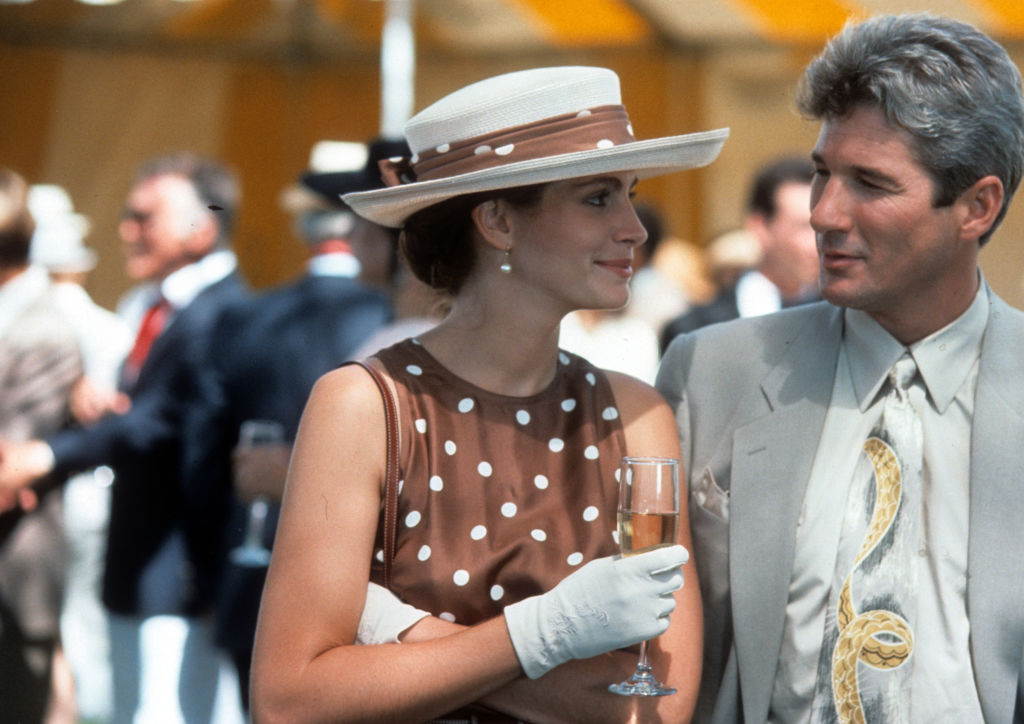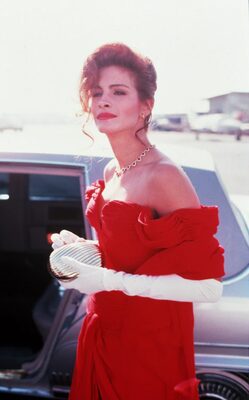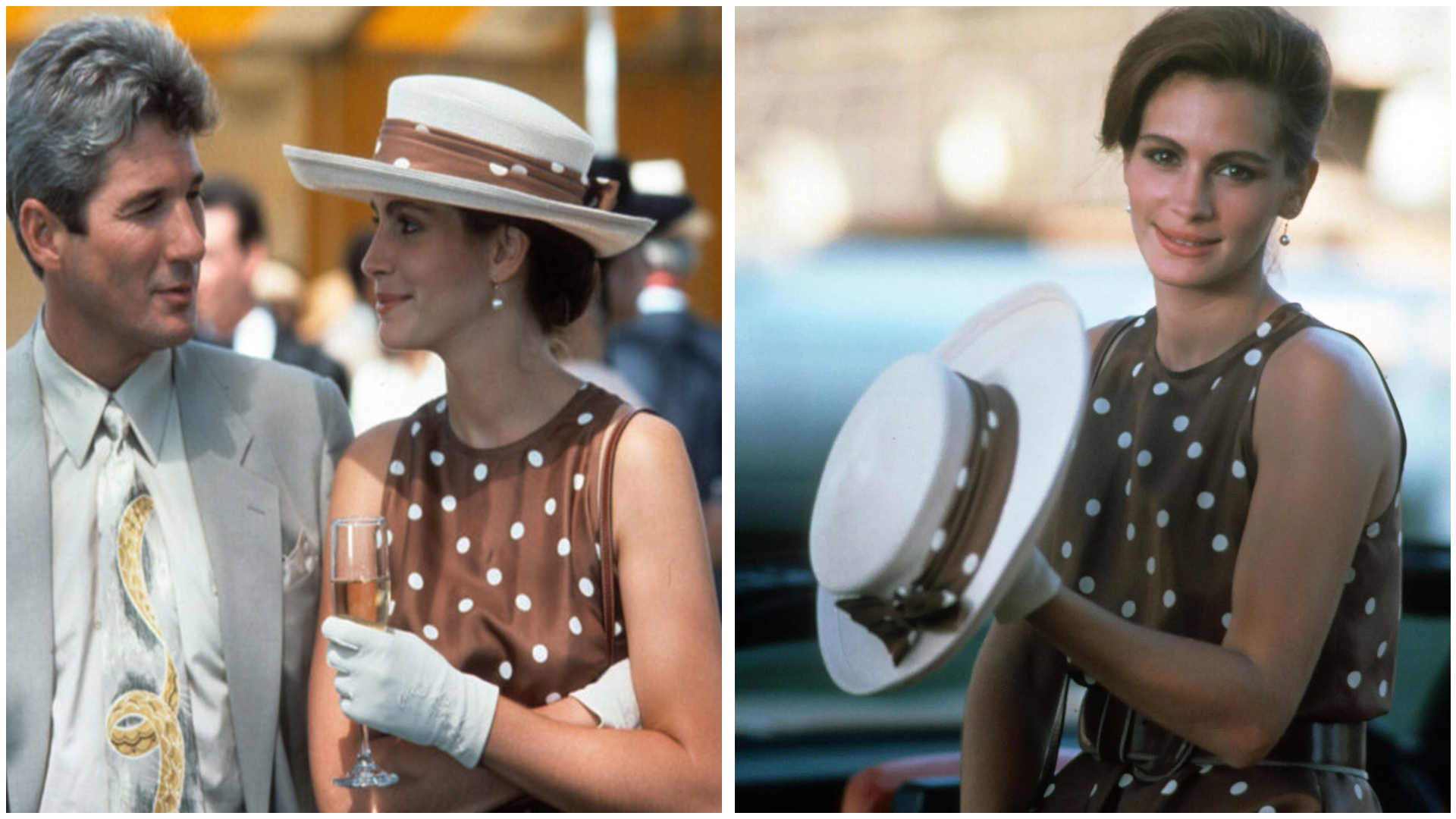The film “Pretty Woman” has a special place in the hearts of many, showcasing a captivating blend of romance and comedy that transcends generations. It’s a movie that feels timeless, drawing viewers in for repeat viewings. However, despite its familiarity, there are intriguing aspects behind the scenes that often go unnoticed. These details not only add depth to the film but also reveal the twists and turns it took to become the iconic classic we know today.
Initially, the project started under the title “3,000,” created by a then-unknown screenwriter named J.F. Lawton. This early version tackled serious themes, exploring the stark realities of class inequality and the often harsh world of corporate greed. The film was envisioned as a more dramatic portrayal of a relationship between a wealthy businessman and a sex worker. However, when Disney acquired the project, everything shifted. The company opted to steer the narrative away from its darker roots, favoring a lighter, more romantic approach. This decision transformed “3,000” into the beloved romantic comedy “Pretty Woman,” which catapulted Richard Gere and Julia Roberts into the spotlight and became a massive hit.

Interestingly, before Gere took on the role of Edward Lewis, the film’s main character, legendary actor Al Pacino was in the running for the part. He even participated in a casting reading with Julia Roberts, who, at the time, was relatively unknown. Although Pacino was drawn to the script, he ultimately declined the role for reasons that remain unclear. However, he did express his admiration for Roberts, recognizing her potential during the audition process. His instincts about her talent proved accurate, as her performance would go on to define her career and become a hallmark of the film.

One of the delightful quirks of “Pretty Woman” occurs during a breakfast scene in Edward’s hotel room. As Vivian, played by Julia Roberts, enjoys a croissant, viewers might notice a continuity error when the croissant suddenly transforms into a pancake. This mix-up happened because director Garry Marshall preferred Roberts’ performance with the pancake in later takes, leading to a hilarious inconsistency that many viewers might not catch on the first watch. In the original scene, the pancake appears to have a different bite pattern, underscoring the film’s charm and the occasional oversight in production.
Another unforgettable element of “Pretty Woman” is the iconic red dress worn by Roberts during the opera scene, which symbolizes her character’s transformation and empowerment. Costume designer Marilyn Vance meticulously crafted not only this eye-catching outfit but also several others that showcased Roberts’ character, Vivian Ward. The details of these costumes tell their own stories, including the charming brown-and-white polka dot dress, which was fashioned from vintage silk sourced from a quaint fabric shop in Los Angeles, demonstrating a perfect blend of elegance and creativity. Vance’s vision extended to Gere’s wardrobe as well, featuring stylish suits in harmonious color schemes.

A particularly memorable scene involves the tie that Vivian playfully snatches from a store employee. This seemingly simple accessory was purchased for just $48 in a local shop, yet it holds significant screen time and also showcases Vance’s ability to create memorable moments through fashion. Notably, this tie undergoes an amusing transformation throughout the film, with its knot changing from a half-Windsor to a full-Windsor, highlighting the quirky continuity errors sprinkled throughout the movie.
In one of the film’s most extravagant sequences, Edward takes Vivian on a shopping spree along Rodeo Drive, introducing her to the opulent lifestyle of the wealthy. This fantastical shopping trip, which would cost a staggering $30,000, showcases the film’s playful exaggeration of wealth and luxury. The moment captures the magic of the film, as Vivian experiences a whirlwind of excitement and glamour, embodying the dreamlike quality that makes “Pretty Woman” so enchanting.
View this post on Instagram
Adding to the film’s allure is the heart-shaped necklace made of rubies and diamonds that Roberts wears during the pivotal ball gown scene. This stunning piece of jewelry was valued at a jaw-dropping quarter million dollars. During filming, a security guard was assigned to keep a watchful eye on this exquisite accessory, underscoring the film’s blend of fantasy and reality. Moreover, the memorable moment where Edward gifts Vivian the necklace was initially intended as a lighthearted prank, with the jewelry box snapping shut on Roberts’ fingers. This unscripted moment turned out to be one of the film’s most iconic scenes, capturing an authentic laugh that resonates with audiences.

“Pretty Woman” is not without its amusing blunders. One notable mistake occurs when Edward’s shoes appear to vanish and then reappear as the characters move from the opera to a park. Additionally, a curious moment involves Vivian hiding cash in her boot, which mysteriously disappears later on, leaving viewers wondering if the money had a mind of its own.
Another whimsical detail involves a selection of colorful condoms that Vivian offers to Edward. The arrangement of these items seems to change between shots, adding a layer of humor and spontaneity to the scene that exemplifies the film’s playful tone.
View this post on Instagram
Interestingly, Richard Gere has openly expressed mixed feelings about his character, Edward. During a film festival in Venice, he described Edward as “criminally underwritten,” commenting that he felt the character was not as fleshed out as it could have been. Despite his critiques, the chemistry between Gere and Roberts is undeniable, both on-screen and off. Gere later revealed that they developed a close friendship during filming, staying in touch long after the cameras stopped rolling.
Julia Roberts played a crucial role in convincing Gere to take on the part, recognizing the significance of their collaboration. Their rapport blossomed as they navigated the complexities of their roles, culminating in a partnership that audiences would fall in love with. Gere recounted a moment when Roberts, with her trademark charm, urged him to accept the role, saying that losing the project would be devastating for her.
In conclusion, “Pretty Woman” stands as a testament to the magic of cinema, capturing the essence of romance and humor against the backdrop of Hollywood’s glitz and glamour. Its behind-the-scenes stories, from casting decisions to wardrobe choices, highlight the creativity and spontaneity that brought this film to life. The film’s lasting impact and the bond between its stars remind us why we keep coming back to this story time and time again. Each viewing reveals something new, ensuring that “Pretty Woman” remains a beloved classic, cherished by audiences around the world.
